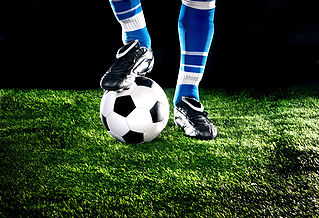What does soccer mastery and evolution have to do with one another? That is a fair question. In my mind, they have an immense amount in common.
From a neuroscience perspective, we are asking our feet and those parts attached to behave in the same way we typically ask our fingers, hands and arms. We are attempting to teach ourselves how to control and manipulate a soccer ball with our feet. As neuroscientist Jeffrey Holts puts it: “Soccer is a triumphant display of the incredible plasticity of the human brain. More than any other sport, soccer requires a brilliance that redefines the cerebral cortex because the soccer player is limited by one simple rule: No hands!”
Our brain has devoted considerable space to the fine motor operations of finger-and-hand operation, and we are ultimately losing that evolutionary advantage in the game of soccer. We know from a neuroscience perspective that the feet of elite soccer players are extraordinarily sensitive and incredibly powerful tools of the trade. This is a perfect example of what we call neuroplasticity, or the brain’s ability to adapt and change as we perceive the need.
A soccer player has to expand the brain regions devoted to feet, to a great degree, to allow for greater neural control and to increase the neuron pathways that control the movements of the feet. To put this into perspective, imagine placing your hand flat on a table while lifting your middle finger. Now try this with a middle toe. You begin to see, that although the muscles are there for the action to occur, it certainly doesn’t happen naturally in a differentiated way. In short,mastering the use of feet to control and manipulate a soccer ball is and will remain a challenging prospect.
So, what can players do to increase their mastery of a soccer ball? Let’s first put it into perspective. You may remember from my last blog post that researchers indicate that a person needs to practice 10,000 hours or roughly 10 years to gain mastery of a particular craft. They also note that a person must continually practice to maintain that mastery. Next, the athlete must learn to manage that set of skills under the intense pressure of competition. Not only do those skills need to be mastered physically, but the mind must master or visualize itself executing those skills successfully during competition.
This coupled with the evolutionary facts above should let us know clearly that we will need to seek some advantage to create and strengthen the neural pathways we need in place to master soccer. Neuroscience and our ability to strengthen those neural pathways (neuroplasticity) through visualization is that answer.
You may remember that when athletes visualize themselves executing a technical skill that the brain is transmitting messages through neuron pathways to the parts of the body being utilized. Blood is being sent to those regions, neuron pathways are firing off signals and the body interprets that the person is carrying out the activity. Performance levels then increase as the neuron pathways are strengthened. Remember, neurons that fire together, wire together, meaning the body and mind synchronize the specific movements an athlete is seeking to execute.
According to Daniel Coyle, who wrote The Talent Code, an athlete must grow neural circuits, must engage in deep practice, must involve chunk learning from whole task to small details of each skill, and must demonstrate a long-term commitment to their sport.
Let’s break down Coyle’s mastery concepts.
-
An athlete must grow neural circuits. If you read a few of my blogs, you probably understand that neural circuits are increased by two methods. The most significant method to grow those neural pathways is through visualization involving both mental and motor imagery.
-
An athlete must engage in deep practice. This kind of training requires both the engagement and repetition of what we refer to as the foundational skills and challenge skills. Foundational skills can be practiced both through physical and imagery work, as well as those skills that are more challenging.
-
An athlete must use chunk learning from the whole task to the small details of each skill. We need first to see or visualize the whole task being performed. It is then important that we see the details of that task performed. This is optimally completed through visualization because through imagining the task, we can slow down the movements and see ourselves performing them with exactness.
-
Finally, athletes must demonstrate a long-term commitment to their sport. If you have read this blog from the beginning, you have come to understand that soccer mastery is no short-term commitment. How athletes arrive at that commitment is derived from their internal desire or mental picture of themselves progressing as discussed in my blog titled.
Ultimately, we need to understand that mastery requires dedicated training during the course of many years. It further requires neural circuitry or pathways created and strengthened in the areas soccer athletes wish to perform, in this case their feet. As athletes visualize both the small details and the larger task of the mechanics they wish to execute, they are strengthening those neural circuits needed to master their craft. The result is finding mastery both during training times and during the intensity of competition.

